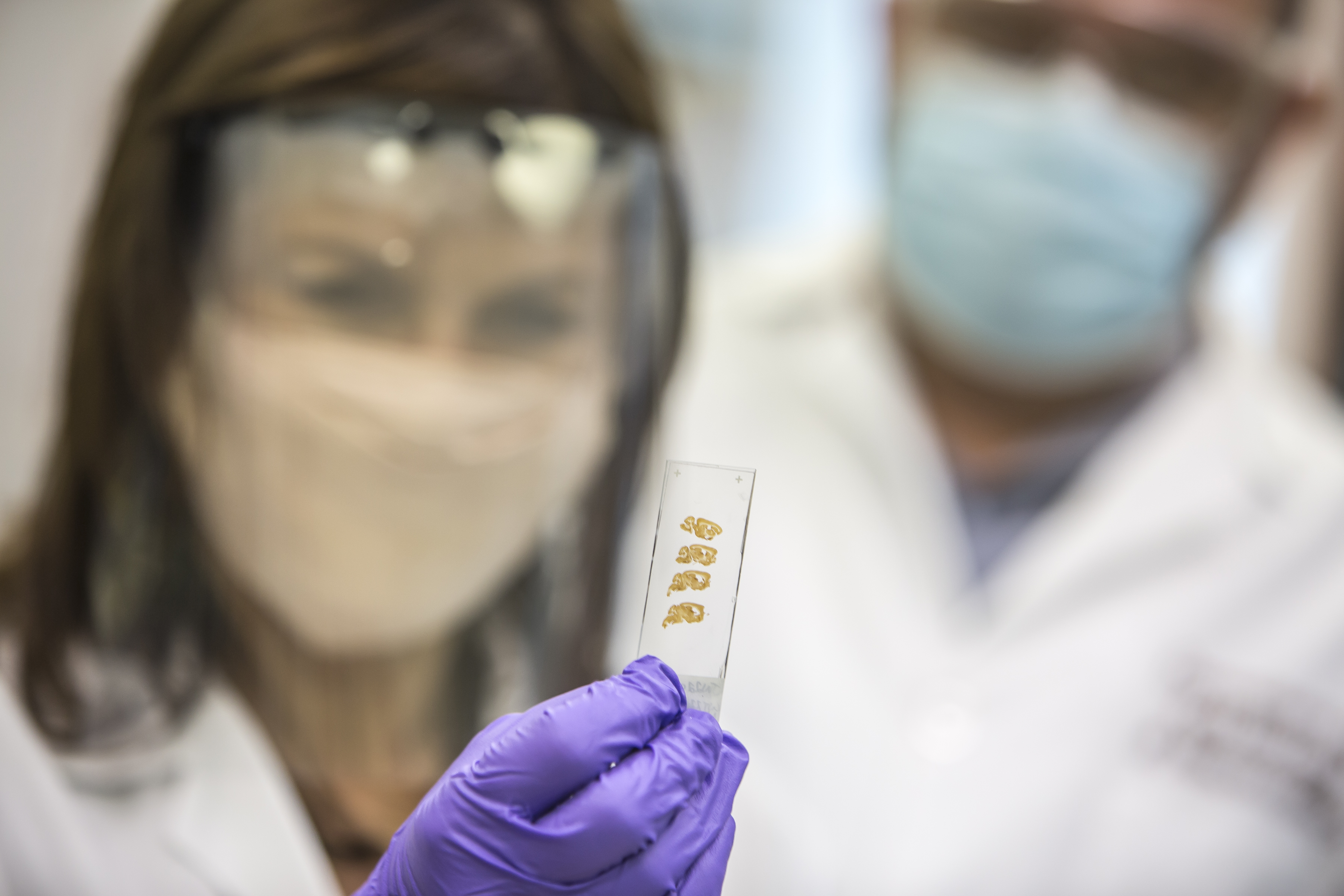On the cusp of a cure for deadly childhood disease
On the cusp of a cure for deadly childhood disease

Children with Canavan disease can’t speak, walk, or even hold their heads up — and their lives are cut short due to the disorder’s progression. Even so, an effective treatment for the inherited neurodegenerative disease is within sight, thanks to the life’s work of Dr. Paola Leone, director of the Cell and Gene Therapy Center at Rowan University School of Osteopathic Medicine.
Based in Stratford, N.J., the center is a "translational" research facility, where discoveries in the lab can directly benefit patients in the clinical setting. It’s also where families come when they’re searching for hope for their children who have Canavan disease.
“Dealing with children with a progressive, uncontrollable disease, there’s very little time,” said Leone, the world’s leading researcher of gene therapy for this destructive disease. “All of these children are running out of time.”
Caused by the mutation of a single gene, the condition affects the body’s production of myelin, the brain’s protective white matter. As it progresses, it affects the gray matter, too, leaving the brain full of holes, like a sponge.
“There’s no cure, just worsening, day after day,” Leone said. “There will be blindness, seizures, paralysis, and eventually, death.”
If researchers can trigger the mutated gene to produce white matter, Leone believes it could stop the progression of the disease and perhaps allow sufferers to lead healthy and independent lives.
In 1996, at just 18 months old, Lindsay Karlin became the first child to undergo gene therapy for Canavan disease, and later received newer gene therapies as Leone’s research developed.
RowanSOM and Cooper University Hospital hosted a NIH-sponsored Phase I/II study on gene therapy for Canavan disease, in collaboration with Children’s Hospital of Philadelphia and The University of North Carolina at Chapel Hill, under a major grant from the National Institute for Neurological Diseases and Stroke.
The clinical trial represented the first use of adeno-associated viral vectors in the human brain, as well as the first viral gene therapy for a neurodegenerative disorder. Adeno-associated viruses are small, non-pathogenic viruses that don’t cause illness. Instead, they deliver small amounts of specific DNA to target genes in the brain.
Now at 25, “Lindsay is certainly better than she would have been without the various therapies,” said her father, Dr. Roger Karlin, an internal medicine physician. “I’m glad she’s still living and enjoying her world.”
Today, Leone’s work uses a novel serotype developed by Drs. Steven Gray and Thomas McCown at the University of North Carolina at Chapel Hill.
“Our gene therapy doesn’t integrate or get encoded into the genome, which could trigger other issues,” said Leone. “Different labs have independently found it to be safe.”
The latest gene therapy targets white matter directly, which could make it more effective, said Karlin. “I hope these new treatments will help the children more – to verbalize, talk, move their extremities just a little, use a computer.”
Two of these children are Benny and Josh Landsman, brothers diagnosed in 2017. When Jennie Landsman and her husband Gary received their sons’ shattering diagnosis, the advice to focus on palliative care “went against every grain in my body,” she said.
They turned to Leone, in whose upcoming clinical trial Benny and Josh are scheduled to take part. However, this long-awaited clinical trial is no guarantee of a quick path to clinical practice — and it’s possible there’s only a small window of opportunity during which an effective treatment might help these children.
To develop a clinical trial that meets FDA requirements, manufacture the innovative gene therapy and cover clinical costs, it costs “$15 million dollars, to say the least,” Leone said.
With a rare condition like Canavan disease, potential sales aren’t enough to entice pharmaceutical companies to invest in research and development of this kind of therapy. That means Leone and other researchers of rare disease treatments must seek funding from other sources.
“The only way we’re advancing it now is through fundraising,” Leone said, “and through the support of people who care.”
That includes the Karlins’ Connecticut-based Canavan Research Foundation, the Landsmans’ Brooklyn-based Cure Canavan Fund and University Advancement at Rowan University. Both families have raised millions of dollars for clinical research.
“I had no plan, no idea how, I just knew I had to get this done,” said Landsman. “Every second counts.”
Though still in its experimental stages, gene therapy can add incalculable value to the lives of children with Canavan disease.
“When we see clinical improvements in patients, parents and caregivers are the first to notice them,” Leone said. “Parents report the ability of their children to finally look into their parents’ eyes and begin smiling appropriately to them and other cues.”
“Despite their profound disabilities, they comprehend so much,” Landsman said. “I’m really excited about how much Benny and Josh will gain without having the limitations they have right now.”